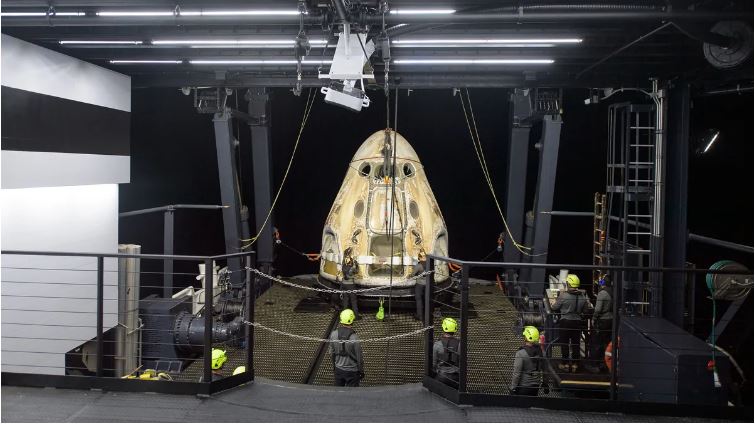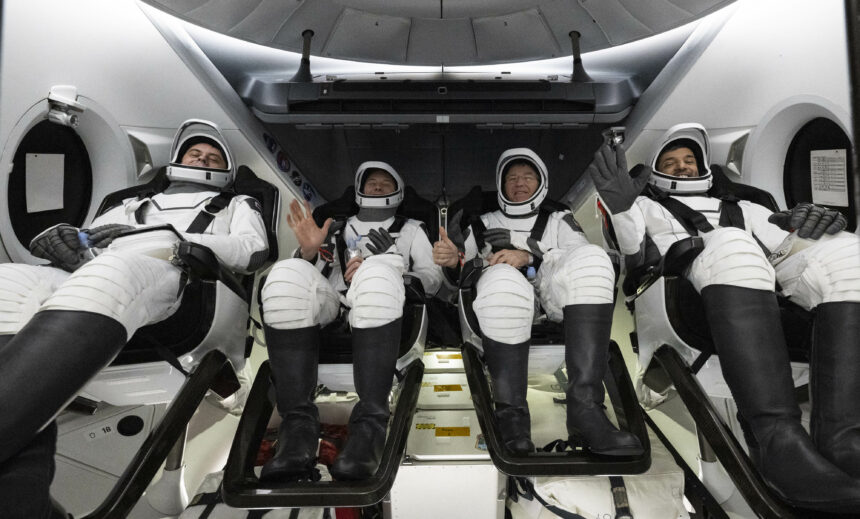Following a safe splashdown in a SpaceX Dragon spacecraft off the coast of Jacksonville, Florida early Monday morning, NASA’s SpaceX Crew-6 mission successfully concluded the agency’s sixth commercial crew rotation mission to the International Space Station (ISS). The international crew of four individuals spent a total of 186 days in orbit.
At 12:17 a.m. EDT, NASA astronauts Stephen Bowen and Woody Hoburg, along with UAE (United Arab Emirates) astronaut Sultan Alneyadi and Roscosmos cosmonaut Andrey Fedyaev, safely returned to Earth. SpaceX recovery vessels were responsible for retrieving the spacecraft and its crew. Following their return to land, the crew is scheduled to travel to NASA’s Johnson Space Center located in Houston.

After spending six months aboard the International Space Station, logging nearly 79 million miles during their mission, and completing hundreds of scientific experiments for the benefit of all humanity, NASA’s SpaceX Crew-6 has returned home to planet Earth. This international crew represented three nations, but together they demonstrated humanity’s shared ambition to reach new cosmic shores. The contributions of Crew-6 will help prepare NASA to return to the Moon under Artemis, continue onward to Mars, and improve life here on Earth.
Bill Nelson, Administrator of the National Aeronautics and Space Administration (NASA)
The Crew-6 mission initiated its journey at 12:34 a.m. EST on March 2, 2023, launching atop a SpaceX Falcon 9 rocket from NASA’s Kennedy Space Center in Florida. Approximately 25 hours later, the Dragon spacecraft successfully docked with the Harmony module’s space-facing port. On May 6, the crew executed a port relocation manoeuvre, moving to the Earth-facing port in anticipation of the arrival of a SpaceX Dragon cargo spacecraft carrying new solar arrays, scientific investigations, and supplies for the space station. Subsequently, at 7:05 a.m. on a Sunday, the crew disengaged from the space station to commence their return journey.
Over the course of their mission, Bowen, Hoburg, Alneyadi, and Fedyaev covered a remarkable distance of 78,875,292 miles, spending 184 days in space and completing 2,976 orbits around our planet. Notably, the Crew-6 mission marked the inaugural spaceflight for Hoburg, Alneyadi, and Fedyaev, whereas Bowen has accrued a total of 227 days in space through his participation in four separate flights.

During their mission, Crew-6 members played a crucial role in various scientific, maintenance, and technology demonstration activities. They conducted multiple spacewalks, installing new solar arrays to enhance the station’s power generation. Additionally, they contributed to numerous experiments, including a student robotic challenge, plant genetics studies, and health monitoring in microgravity for future space exploration and Earth’s benefit.
The mission marked the fourth flight of the Dragon spacecraft, named Endeavour, which will undergo inspection and processing in Florida before its next flight. Crew-6 is part of NASA’s Commercial Crew Program, and their return coincided with the launch of NASA’s SpaceX Crew-7, continuing important scientific work aboard the International Space Station.
Overall, NASA’s Commercial Crew Program aims to provide safe, reliable, and cost-effective transportation to and from the ISS, maximizing research opportunities and helping NASA prepare for future lunar and Martian exploration.








